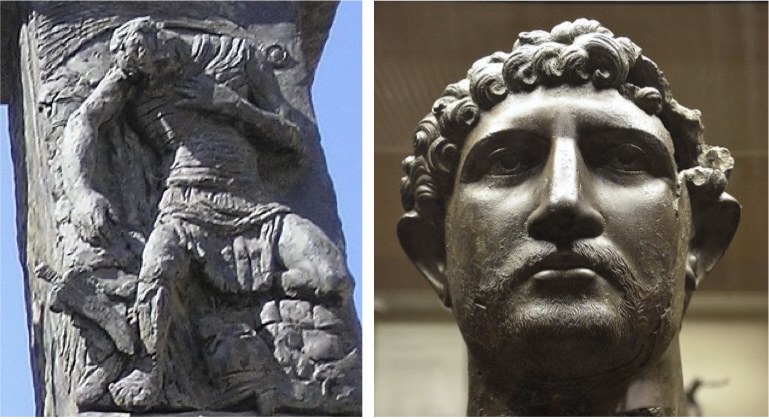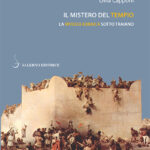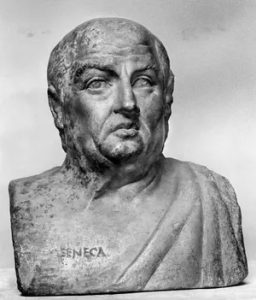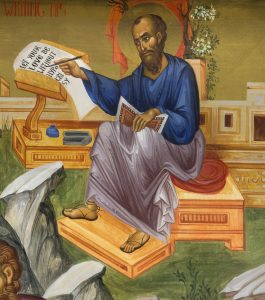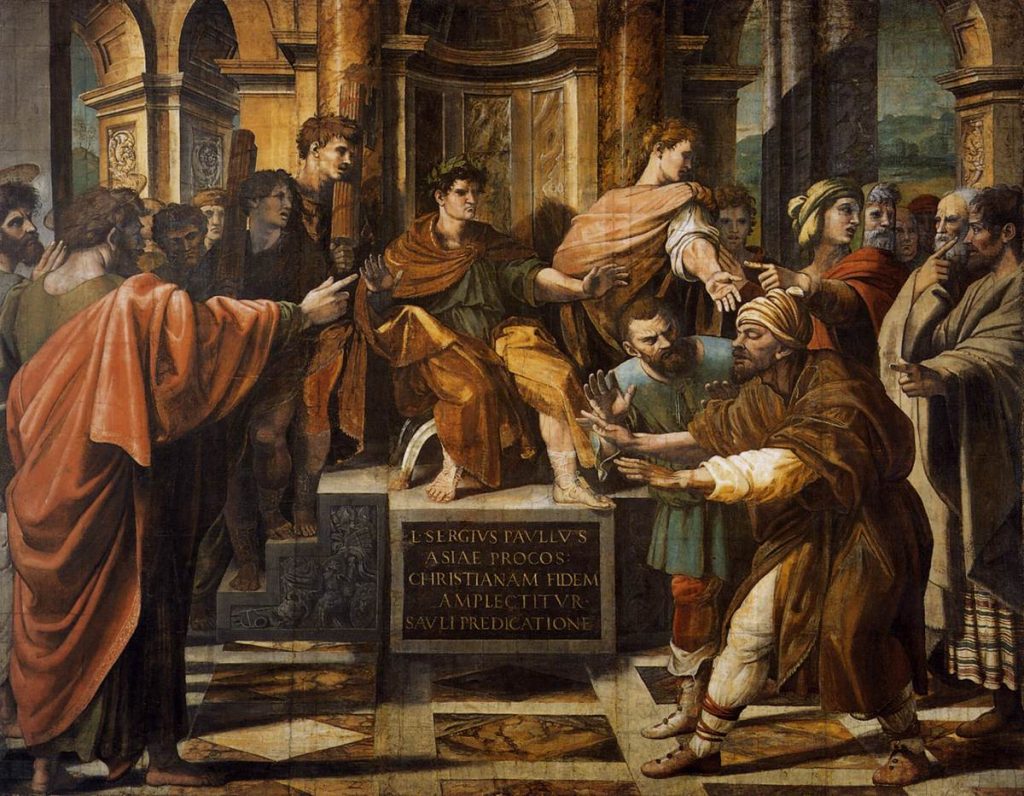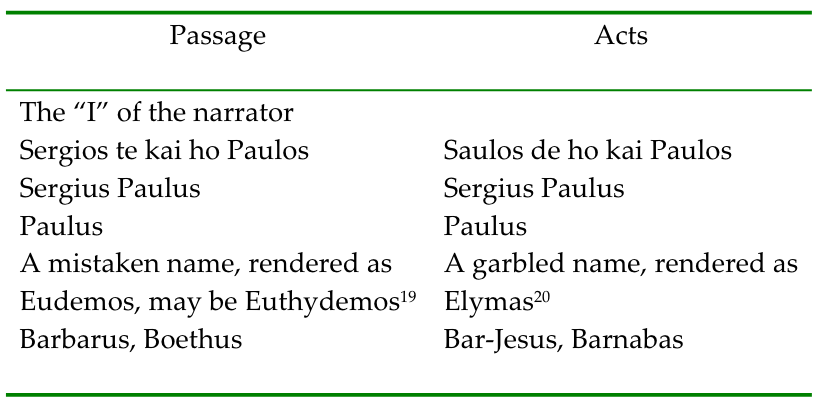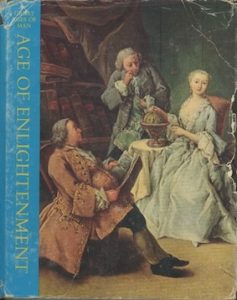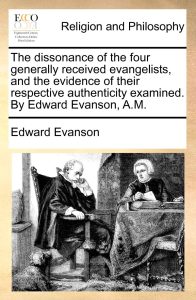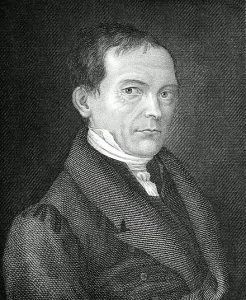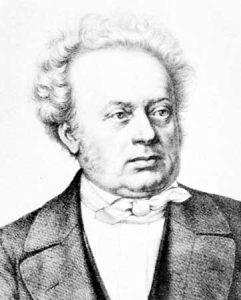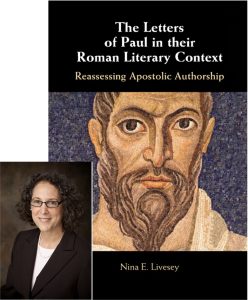This post is the final in my series discussing Nina Livesey’s The Letters of Paul in Their Roman Literary Context: Reassessing Apostolic Authorship.
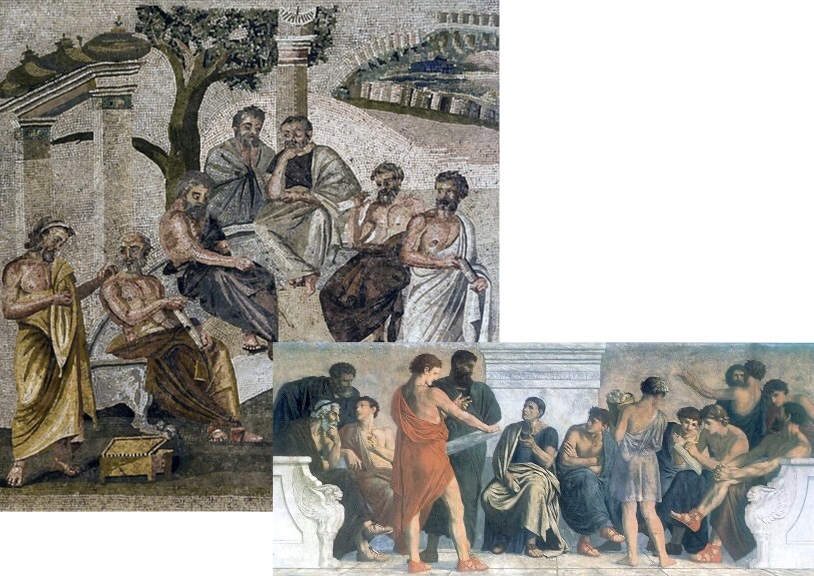
Nina Livesey (NL) sees the letters of Paul being composed and published in a philosophical school setting in Rome in the second century CE. There were many schools of this type in Rome at this time. We are to imagine a teacher, a philosopher, who attracted student followers. The teacher-philosopher would often hold public meetings to read work they had put in writing; discussion and new ideas would follow; and a final written work then submitted to contracted sponsors who would make copies for distribution to interested persons.
It sounds strange to our ears that Christian teachings should be categorized as a “philosophy” but Christian teachers were described in the same way: teachers of certain doctrines and heads of schools. The physician Galen referred to a “school of Moses and Christ”; the “church father” Justin spoke of one such Christian teacher facing the death penalty (as some philosophers experienced because of indiscreet public pronouncements – discussed by Secord). Many such Christian teachers are found in our sources: Saturninus, Cerdo, Marcion, Tatian, Justin, Valentinus. . . The Latin word translated as “heresy” might be as well understood as a “school” (NL, further citing Vinzent).
We have evidence of mutual exchanges among these various schools. Some would denounce other teachers; others would engage in less heated debate; the surviving writings also demonstrate various means of persuasion, such as listening respectfully to challenging questions and addressing hearers as close friends or even family.
Comparing Paul with the philosopher Justin
One of these teachers or Christian philosophers was Justin, known as Justin Martyr – mid second century – who identified himself as a philosopher. Justin taught that his understanding of the prophecies in the Jewish Scriptures came from an encounter with “an old man” who inspired him to turn his back on all his previous knowledge. The pattern echoes the callings we read about in the gospels and Acts of the twelve disciples and Paul who come to understand the Scriptures through listening to Christ or his servants. NL reminds us of an article by Andrew Hofer, “The Old Man as Christ in Justin’s ‘Dialogue with Trypho'”. NL in fact refers to a host of earlier work discussing the nature and workings of these “Christian” philosophical schools (interested readers might like to follow up some of these in the insert box).
- Dillon, John. “Philosophy as a Profession in Late Antiquity.” In Approaching Late Antiquity: The Transformation from Early to Late Empire, edited by Simon Swain and Mark Edwards, 401–18. Oxford University Press, 2003.
- Georges, Tobias. “Justin’s School in Rome–Reflections on Early Christian ‘Schools.’” Zeitschrift Für Antikes Christentum / Journal of Ancient Christianity 16, no. 1 (May 15, 2012): 75–87.
- Lieu, Judith. Marcion and the Making of a Heretic: God and Scripture in the Second Century. Cambridge University Press, 2015.
- Schott, Jeremy M. “General Introduction.” In The History of the Church: A New Translation / Eusebius of Caesarea, translated by Jeremy M. Schott. University of California Press, 2019.
- Dillon, John. “Philosophy as a Profession in Late Antiquity.” In Approaching Late Antiquity: The Transformation from Early to Late Empire, edited by Simon Swain and Mark Edwards, 401–18. Oxford University Press UK, 2003.
- Eshleman, Kendra. The Social World of Intellectuals in the Roman Empire. Cambridge University Press, 2012.
- Nasrallah, Laura. “Mapping the World: Justin, Tatian, Lucian, and the Second Sophistic.” The Harvard Theological Review 98, no. 3 (2005): 283–314.
- Rubenson, Samuel. “Early Monasticism and the Concept of a ‘School.’” In Monastic Education in Late Antiquity: The Transformation of Classical Paideia, edited by Lillian I. Larsen, 13–32. Cambridge University Press, 2018.
- Secord, Jared. Christian Intellectuals and the Roman Empire: From Justin Martyr to Origen. Penn State University Press, 2020.
- Snyder, Harlow Gregory. “‘Above the Bath of Myrtinus’: Justin Martyr’s ‘School’ in the City of Rome.” Harvard Theological Review 100, no. 3 (July 2007): 335–62.
- Snyder, Gregory H. Christian Teachers in Second-Century Rome Schools and Students in the Ancient City. Brill, 2020.
- Ulrich, Jörg. “What Do We Know about Justin’s ‘School’ in Rome?” Zeitschrift Für Antikes Christentum / Journal of Ancient Christianity 16, no. 1 (May 15, 2012): 62–74.
- Walsh, Robyn Faith. The Origins of Early Christian Literature: Contextualizing the New Testament within Greco-Roman Literary Culture. Cambridge University Press, 2021.
- Wendt, Heidi. At the Temple Gates: The Religion of Freelance Experts in the Roman Empire. Oxford University Press, 2016.
- Wendt, Heidi. “Marcion the Shipmaster: Unlikely Religious Experts of the Roman World?” In Marcion of Sinope as Religious Entrepreneur, 55–74. Studia Patristica., Vol. XCIX. Peeters, 2018.
- Vinzent, M. Marcion and the Dating of the Synoptic Gospels. Peeters, 2014.
- Vinzent, Markus. “Orthodoxy and Heresy: Misnomers and Misnamers.” Forum: Foundations and Facets. Third Series 10, no. 1 (Spring 2021): 91–108.
- Watts, Edward J. City and School in Late Antique Athens and Alexandria. University of California Press, 2006.
Such schools evidently had access to many writings such as the Jewish Scriptures and commentaries on them.
Our reading of Justin’s work, NL points out, alerts us to similar approaches and aims in Paul’s letters:
The assessment of the [Justin’s Dialogue with Trypho] as protreptic teachings redolent of a school setting allows for additional parallels with the letters. Like Justin, the Apostle Paul’s call to “Christian” teachings arrives through other worldly means (Gal 1:13-16). Both Justin and the Apostle Paul are seen to depart from former philosophies (Justin) or a former way of life (Apostle Paul) to embrace the new teachings (Gal 1:13-2:2; Phil 3:4-11).160 As indicated in Chapter 3, the Pauline letters contain numerous instances of the language of friendship and posit community members as family (“brothers”). In the letters, issues of theological import are made applicable to communities, as are community members cautioned against the influence of others.
Furthermore, like the Dialogue, Pauline letters also make extensive use of the LXX161 in support of “Christian” principles. . . Like the Dialogue, Pauline letters contain verses cited verbatim but also those that are strategically amended. This use of scripture, is an indication of their ready availability . . . and thus provides an additional indication of a school like setting. (NL, 235f)
The School of Marcion
NL argues that the letters attributed to Paul were most plausibly produced by the school of Marcion.
Marcion is associated with an influential school in Rome and is known as having advanced “Christian” doctrines, and as having produced and published various compositions. In addition, among the second-century school heads (writer/intellectuals) in Rome, Marcion is regarded as having a nearly exclusive interest in Paul as being the one true Apostle from among all other “Christian” apostles and figures. Marcion’s ten-letter collection of Pauline letters (the Apostolikon) is our earliest evidence of Pauline letters.
Among the “Christian” intellectuals and heads of schools in second-century Rome, Marcion is arguably the most well-known. . . . According to [Judith Lieu], Marcion may have been the first among the “Christian” school heads operating in Rome . . . It has likewise been suggested that the codex form may have derived from Marcion. Vinzent notes that “no other teacher in the history of the Church until Martin Luther received during his lifetime (and continuing after his death) a comparable literary response.” (NL 236f)
All indications are that Marcion moved to Rome shortly after the Bar Kochba war. NL cites David Balás and I’ll quote a little more from Balás than NL specifically mentions (bolded highlighting and formatting is mine):
Marcion’s doctrines are marked by a certain simplicity, not to say single- and simple-mindedness that distinguish them from the elaborate speculations of other Gnostics or the metaphysical analyses of leading philosophers. John G. Gager has recently shown, however, the similarity of some of Marcion’s arguments, as reported by Tertullian, to certain philosophical (notably Epicurean) proofs against providence.19 The difference is that, whereas for Epicure the (especially physical) evils of this world excluded divine providence (the gods dwelled unconcerned in the intermundia) and lead, according to the Skeptics, to doubt of the existence of god(s), Marcion accepted (with the Old Testament!) the existence of a Creator, but concluded from the popular-philosophical arguments that the Creator was neither omniscient nor truly good.
19 The evidence considered above indicates that Marcion was also familiar with philosophical issues of his time and that Epicurean philosophy in particular provided an argument which Marcion used to support the key element of his thought. (Gager, “Marcion and Philosophy”, p. 59)
Of course, Marcion’s opposition to matter, body, and passions was also close to contemporary philosophy (Stoic and Neo-Pythagorean). . . .
What seems constant in all the above instances was Marcion’s tendency to provide a simple solution, without much concern for either the complexities of the data or the consistency of the system, a tendency which may explain the popular success and enduring strength of Marcionism.
Besides the Gnostic and popular-philosophical sources, I believe Marcion’s “point of departure” was deeply influenced by his and his fellow Christians’ relationship to Judaism in the middle of the second century. Marcion came to Rome around 136-140 and was expelled from the Roman Church in 144. These dates coincide with the period of the bloody suppression of the great Jewish revolt in 135. R. M. Grant has argued that the disillusionment of Jewish sects with the seemingly powerless and deceptive God of the Old Testament was one of the reasons for the Gnostic reduction of Yahweh to an imperfect or even hostile deity.
Whether this is wholely or partially correct or not, Grant’s similar hypothesis concerning Marcion seems quite possible. Grant said that Marcion “…wanted to dissociate Christianity not only from apocalyptic Judaism, but also from Judaism in general.” Politically and socially, the Christians, especially hellenistic Christians with no national or cultural roots in Judaism, found at this time their association with Jewish history an embarrassing and dangerous liability. Marcion may have found a way to effect this desirable separation by using Jewish self-interpretation at several main points. For instance,
— by accepting the anti-Christian contention of some Jews that Jesus Christ was not the Messiah promised by the Old Testament, a Messiah the Jews rightly expected to be political and warlike, Marcion made a counter claim that Christ was in fact the self-revelation of a previously entirely unknown, all-good God.
— Secondly, the Jewish rejection of Christian typological or spiritual exegesis of the Old Testament, which seemed to threaten Christianity’s claims to historical legitimacy, was now seen as a liberating insight.
— Finally, the shaken confidence of many Jews in the confirmed goodness, omniscience, and all-powerfulness of Yahweh (incompatible as it seemed with the historical realities of the time) was taken as an admission that the God of the Old Testament was inferior to the all-good and perfect God revealed in Jesus Christ.
Paradoxically, it was precisely by having accepted Jewish scriptures and history, at least to a large extent, in their contemporary Jewish interpretation that Marcion arrived at his radical dissociation of the [Old and New] Testaments! (Balás, 98f)
If, as has been argued, Marcion came from a proselyte Jewish family we can scarcely avoid wondering about the impact on him of the total destruction of Jerusalem to the extent of the emperor Hadrian banning Jews even from entering the city and the widespread massacres of Jews that had been carried out under both Trajan and Hadrian. Though Marcion reduced the god of the Old Testament to an inferior deity beneath the higher and more merciful Good God of Jesus and the New Testament, he nonetheless retained key Jewish foundations:
Vinzent comments, “Marcion’s message … built on the Jewish foundations, on the Jewish Scriptures, the messianic hope, Jewish ethics, rituals and the Jewish people.”191 That his was a “book-religion” likewise owes to Jewish influence.192 (NL, 240. Note 191 = “Marcion the Jew”; 192 = Marcion and the Dating)
I’ll quote a little more from Vinzent:
Marcion did not want Christianity to disinherit the Jews and incorporate their Holy Scriptures into its own canon, but saw only one heritage, namely that given by God in his revelation to Paul. Christianity was simply incomparable to anything that the creator had made, be it the universe, its history, the Law or the prophecies of Judaism. And yet, Marcion could not free himself from his Jewish and Greco-Roman roots. That Christianity would be a book-religion in its own right was one of Marcion’s Jewish ideas and objectives, and one that he achieved. And that Christianity would be a thoroughly Hellenized religion without being lost in this world of the creator, in the sphere of apocalyptic religious politics and prophetic cults, Marcion secured by rooting the sayings of a faintly remembered Jewish messianic rabbi into Greco-Roman history. Jesus, who had come down from heaven as an angel-like human being under Emperor Tiberius and procurator Pontius Pilate, delivered his message through a new literary form, a combination of startling sayings and surprising deeds, through unexpected aphorisms and mind-blowing miracles, performed on Jesus’ journey towards the shame of the cross and the unbelievable resurrection. Marcion created a powerful narrative of a transcendent, pre-existing figure who appeared on this alien earth, in the midst of history, to liberate human beings from these physical chains of ignorance, greed, law, sin, judgement and the need for repentance, to rescue humanity through buying men back by paying the price of death on the cross, through his descent to the utmost depths of hell, in order to save all who wanted to accept this helping hand, and to let them be where and what the Risen is. In the same way that this cosmic creation was a despicable horror without end, unfolding as a tragic history, in the eyes of creatures, even of the elect and chosen disciples, the Saviour was regarded as a tragic hero. The only exception was Paul, who understood because he was granted the grace of divine insight. He followed Christ and developed the good news. Marcion’s Gospel, therefore, describes this tragic history of Jesus’ life, the failure of calling and the rejection of the elect. In contrast, among those who follow Jesus are people nobody would have dared to admit, and like the paralytic, these become co-sufferers and equally co-hated with Christ.
. . . . Before Marcion was made the ‘arch-heretic’, he seems to have been the arch-theologian, ‘the founder of a religion’ and of a new cult, Christianity. . . . (Vinzent, Marcion and the Dating, 134f)
Key points noted in this context by NL:
- Marcion was a publisher
- He published the first New Testament (a gospel similar to our Gospel of Luke and the ten letter collection of Paul)
- He published Antitheses, apparently an explanation of his philosophical principles and commentary on his gospel, a list of oppositions between the Law and Prophets on the one hand and the gospel on the other.
Our surviving witnesses to Marcion, coming from the writings preserved by the orthodox church, opposed Marcion as “a heretic”. But in the middle of the second century there was no authoritative judgment seat from which to distinguish truth from error. It is unlikely that in his own day Marcion could be “banished as a heretic” in the sense we imagine such a process of later times. The Marcionite and “Catholic-to-be” communities surely overlapped one another, as NL notes.
Rivals of Marcion produced alternative texts, presumably revising what Marcion himself had written. See, for example, the series of posts discussing Joseph Tyson’s grounds for believing that our version of the Gospel of Luke is an anti-Marcionite revision of Marcion’s gospel.
When we read in the early Church Fathers apparent quotations from the gospels and letters we find that they very often vary in some way from the canonical versions we read in our Bibles. This is especially so in the works that are critical of Marcion’s texts. NL outlines the various theses to account for these differences:
- Marcion used and edited an existing copy of the Gospel of Luke (the opponents of Marcion adhered more closely to the original gospel)
- Catholic writers and Marcion each revised independently an early form of the Gospel of Luke
- Marcion edited an earlier shorter version of the Gospel of Luke and Catholic revisers expanded Marcion’s version to produce the Gospel we recognize today
- Noting the lack of evidence of any gospel text prior to the second century, and further suggesting that the first gospels emerged in post Bar Kochba school settings, Vinzent takes the next logical step and proposes that Marcion produced the first gospel.
Vinzent maps the production of the gospel onto what is known of the way the schools functioned. A text was composed, read publicly and discussed and argued among close associates and student followers, revised with a final version being published more generally. The gospel and letters were written in an environment of free exchange of ideas and underwent a number of revisions. In this way the variant early versions of gospels and letters can be explained.
In other words, the explanation for the absence of evidence for any gospel or epistle prior to the middle of the second century is that they did not exist prior to the time of Marcion. Opponents of Marcion claimed he “discovered” or “found” Paul’s Letter to the Galatians. If that motif sounds familiar, it may be because we have come across it in the story of King Josiah discovering the Book of Deuteronomy: see my post showing that this claim was not at all unusual when one sought to introduce a new authoritative text as if it had the authority of antiquity.
According to modern epistolary theorists, the suggestion of finding a letter is what one would expect of an editor of a pseudonymous letter collection who wanted to provide a sense of the letter’s authenticity. If, as argued, Marcion created a gospel, a new literary genre, he – with the help of those in his school – could certainly have crafted and overseen the composition of mock letters in the name of the Apostle Paul, deploying a known and popular literary genre. (NL, 248)
For Marcion, Paul was the only apostle who truly understood the gospel of the Christ who had come from the “unknown god” who was higher than the creator god of the Law and the Prophets. That Marcion published his Gospel and Letters of Paul side by side might be seen as an indicator that he saw his “New Testament” as an “antithesis” of the Law and the Prophets of the “Old Testament”. NL indicates that such factors strongly suggest that Paul’s letters were, like the gospel, originally composed by Marcion himself. If so, then it is also likely that the letters of Paul were written with a clear knowledge of the gospel narrative. They did not precede a written gospel, in other words, but were produced alongside the gospel.
The Marcionite authors were active in the years following the calamity of the Bar Kochba war. NL finds appropriate Jason BuDuhn’s observation:
Whatever the internal developments within Christianity that prepared the way for the creation of a New Testament . . . it is simply impossible to dismiss the coincidence in time of Hadrian’s anti-Torah campaign and Marcion’s call for the establishment of a distinct and separate Christian sacred scripture. (NL, 251, quoting BeDuhn’s The First New Testament)
Letters were a popular means of teaching new philosophies; philosophical schools in Rome were common and responsible for the publications of and readings of rival teachings; the social and psychological dislocations that resulted from the Bar Kochba war provide a plausible background to the “Jewish but not Jewish” religious ideas of Marcion; and Paul, the only apostle said to have understood the gospel of an all-loving and non-judgmental god, was Marcion’s ideal alter-ego.
NL’s argument thus removes the Pauline letters from being in many ways unique in the ancient world, as many biblical scholars have thought, and places them in a social and ideological setting that seems to make them emerge quite “naturally”.
In an appendix NL explores in depth the educational background required to compose the letters. The production of texts that were persuasive, that could be emotionally gripping, that were instructional at the same time, was the work of highly educated persons. They did not emanate from the typical wandering preacher or tent-maker as Paul is supposed to be according to Acts of the Apostles.
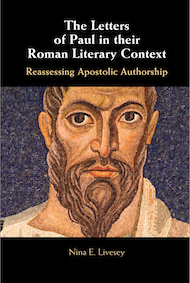
My Concluding Thoughts
I have raised a number of open questions along the way of my re-reading and writing these notes on Nina Livesey’s book, but now I’ll offer something more conclusive. I think Livesey’s explanation of the evidence we have for the earliest New Testament writings has two major advantages over many others: Occam’s Razor and Explanatory Power. One does not need to hypothesize earlier versions of the texts for which we have no evidence. What we see at the beginning — gospel and Pauline letters in the hands of Marcionites — was the beginning of the gospels and New Testament letters. The evidence likewise informs us that the first “Christian schools” and teachers arose from among migrations to Rome in the wake of the Bar Kochba war and of Hadrian’s “final solution” punitive measures against Jews and their ideological base of Jerusalem. Such timing opens up a very plausible explanation for both the form (letters) and the content (presented as a “higher antithesis” of “Judaism”) of teachings that we find among the earliest Christians.
(As has further been discussed in other posts relating to Jesus and the Rank-Raglan hero class, mythical narratives do not evolve from illiterates telling stories around campfires over a generation or two: they are born from the minds and pens of the literate. That is one more point that is consistent with NL’s proposal of a school origin of the gospel story.)
Balás, David L. “Marcion Revisited: A ‘Post-Harnack’ Perspective.” In Texts and Testaments: Critical Essays on the Bible and Early Church Fathers, edited by W. Eugene March, 95–108. Trinity University Press, 1980.
Gager, John G. “Marcion and Philosophy.” Vigiliae Christianae 26, no. 1 (March 1972): 53–59.
Livesey, Nina E. The Letters of Paul in Their Roman Literary Context: Reassessing Apostolic Authorship. Cambridge University Press, 2024.
Vinzent, Markus. “Marcion the Jew.” Judaïsme Ancien – Ancient Judaism 1 (2013): 159–201.
—- Marcion and the Dating of the Synoptic Gospels. Peeters, 2014.

